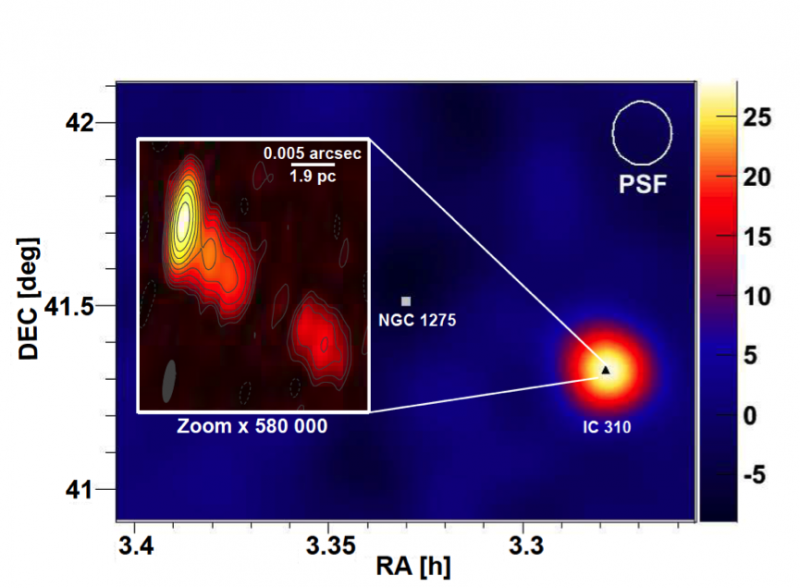A lightning inferno at the event horizon of a massive black hole
Fri, 07/11/2014 - 09:14
Results published by the Science journal on November 6, 2014 show a powerful flare of high-energy gamma-radiation from the galaxy IC 310 in the Perseus Cluster, at 260 million light years from earth. This flare was observed with the twin 17-m telescopes of the MAGIC telescope at La Palma/Canary Islands. Ancillary observations with the European VLBI Network - EVN, funded by the EU project RadioNet3, show a remarkable straight plasma jet emerging from the vicinity of a supermassive black hole at the centre of the galaxy, in a region smaller than a light year. Teaming up both instruments, MAGIC and the EVN, provides an unprecedented view of this violent environment of supermassive black holes, the most enigmatic objects in the Universe. Gamma-ray observations have provided the time resolution, and radio interferometric measurements yield a unique imaging capability.The flickering of the gamma-ray flare on time scales of less than five minutes show that those originated in a region smaller than the event horizon of the black hole. This was a big surprise.
Image caption: Gamma-ray image of the Perseus cluster (right) with MAGIC, and zooming in a factor of 580000, radio jet image of IC 310 obtained with EVN (left). © Science, AAAS
»
»
|


